
Kohima: The Jewel of the Naga Hills
Discover Kohima, the heart of Nagaland, where natural beauty and rich tribal heritage come together to offer an unforgettable experience.
Nestled in the northeastern state of Nagaland, Kohima is a city that effortlessly blends natural beauty with rich cultural heritage. As the capital city of Nagaland, Kohima stands as a vibrant testament to the traditions and way of life of the Naga people. The city is enveloped in lush green hills and offers breathtaking views of the surrounding landscapes, making it a haven for nature lovers and adventure seekers alike. One of the most notable attractions in Kohima is the War Cemetery, a serene and beautifully maintained memorial dedicated to the soldiers who lost their lives during World War II. Another must-visit is the Kohima Cathedral, known for its unique architectural style and tranquil atmosphere. For a deeper dive into the local culture, the State Museum showcases an extensive collection of tribal artifacts, providing visitors with insights into the rich history and customs of the Naga tribes. Kohima is also the gateway to the famous Dzükou Valley, often referred to as the 'Valley of Flowers.' This stunning valley is a trekker’s paradise, offering mesmerizing views of rolling hills adorned with seasonal flowers. The Hornbill Festival, held every December, is yet another highlight, featuring traditional music, dance, and crafts, celebrating the diverse cultures of Nagaland. Whether you are an adventurer, a history enthusiast, or a culture aficionado, Kohima promises an enriching and unforgettable experience.
Local tips in Kohima
- Visit in December to experience the Hornbill Festival and witness traditional Naga culture in full bloom.
- Pack comfortable trekking shoes if you plan to explore the Dzükou Valley.
- Hire a local guide for a more informative and immersive experience of the city and its surroundings.
- Sample local Naga cuisine, especially dishes made with smoked pork and bamboo shoots.
- Respect local customs and traditions; always ask for permission before taking photos of people.
Kohima: The Jewel of the Naga Hills
Nestled in the northeastern state of Nagaland, Kohima is a city that effortlessly blends natural beauty with rich cultural heritage. As the capital city of Nagaland, Kohima stands as a vibrant testament to the traditions and way of life of the Naga people. The city is enveloped in lush green hills and offers breathtaking views of the surrounding landscapes, making it a haven for nature lovers and adventure seekers alike. One of the most notable attractions in Kohima is the War Cemetery, a serene and beautifully maintained memorial dedicated to the soldiers who lost their lives during World War II. Another must-visit is the Kohima Cathedral, known for its unique architectural style and tranquil atmosphere. For a deeper dive into the local culture, the State Museum showcases an extensive collection of tribal artifacts, providing visitors with insights into the rich history and customs of the Naga tribes. Kohima is also the gateway to the famous Dzükou Valley, often referred to as the 'Valley of Flowers.' This stunning valley is a trekker’s paradise, offering mesmerizing views of rolling hills adorned with seasonal flowers. The Hornbill Festival, held every December, is yet another highlight, featuring traditional music, dance, and crafts, celebrating the diverse cultures of Nagaland. Whether you are an adventurer, a history enthusiast, or a culture aficionado, Kohima promises an enriching and unforgettable experience.
When is the best time to go to Kohima?
Iconic landmarks you can’t miss
Razhü Point
Discover the breathtaking beauty and rich history of Razhü Point, a premier historical landmark in Kohima, Nagaland, ideal for tourists and history enthusiasts.
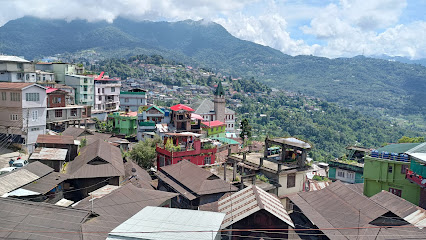
Kisama Heritage Village
Explore the vibrant culture and history of the Naga tribes at Kisama Heritage Village, a must-visit tourist attraction in Kohima, Nagaland.
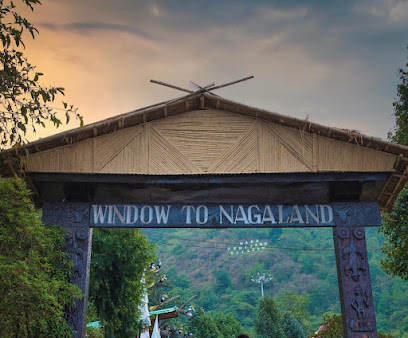
CommonWealth World War II Cemetry
Explore the Commonwealth World War II Cemetery in Kohima, Nagaland, a serene tribute to bravery and sacrifice with rich historical significance.
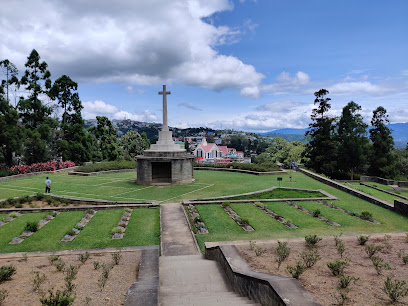
Nagaland State Museum
Discover the cultural heritage of Nagaland at the State Museum, featuring tribal artifacts and rich historical narratives in Kohima.
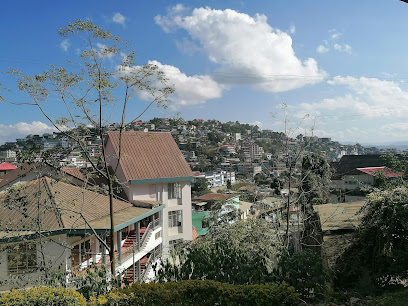
D/C∀FÉ
Discover the cozy charm of D/C∀FÉ, a delightful café in Kohima serving exquisite coffee and light meals in a peaceful setting.
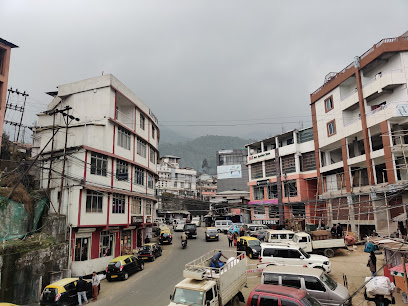
The Heritage
Discover the charm of Kohima at The Heritage, a unique hotel and restaurant offering a taste of local culture and modern comfort.

de Oriental Grand
Discover comfort and culture at de Oriental Grand in Kohima, your perfect base for exploring Nagaland's vibrant heritage and stunning landscapes.

Sakhrie Park
Discover tranquility at Sakhrie Park, Kohima's lush escape filled with vibrant flora, serene walking paths, and picturesque picnic spots.
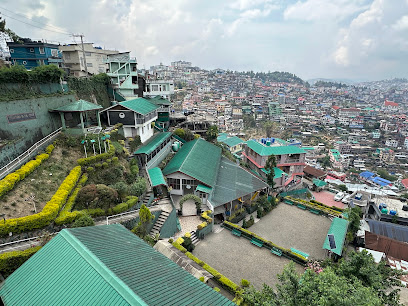
Dzükou Valley
Experience the breathtaking beauty of Dzükou Valley, a hiker's paradise in Nagaland, known for its vibrant flora and serene landscapes.
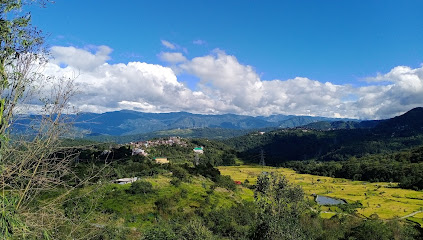
Ozone Cafe
Discover the warm ambiance and delightful flavors at Ozone Cafe, Kohima's perfect spot for coffee lovers and casual diners.
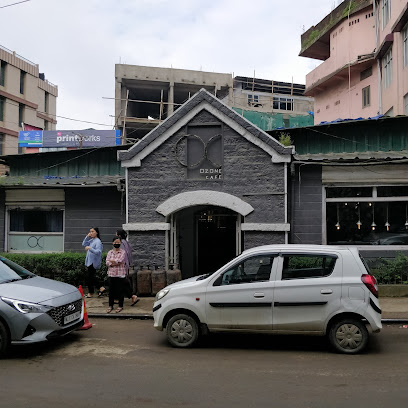
Kohima Camp, Nagaland
Discover the essence of Naga culture and stunning landscapes at Kohima Camp, a unique lodging experience in the heart of Nagaland.

Kohima Cathedral Church
Explore the majestic Kohima Cathedral, a serene and architectural wonder nestled in the hills of Nagaland, showcasing the rich heritage of the Naga people.
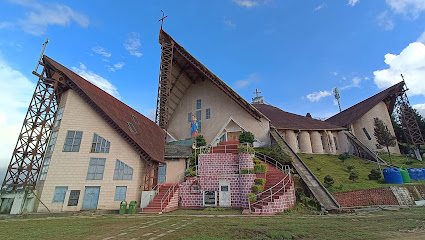
The East Gate Hotel
Experience comfort and tranquility at The East Gate Hotel in Kohima, your perfect base for exploring Nagaland's rich culture and beautiful landscapes.

Gravity
Discover a vibrant shopping experience at Gravity in Kohima, where local culture meets modern retail and entertainment.
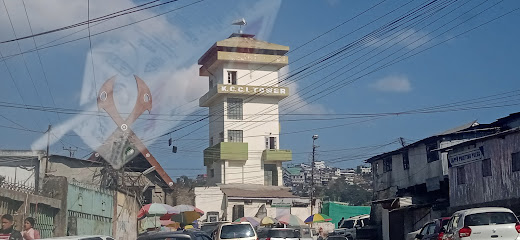
Puliebadze, Jotsoma Village
Explore Puliebadze in Jotsoma Village, a stunning tourist attraction in Kohima, Nagaland, showcasing vibrant nature and rich cultural experiences.
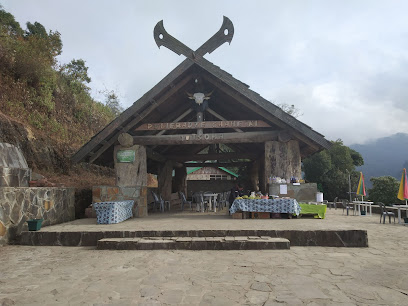
Unmissable attractions to see
Razhü Point
Explore Razhü Point in Kohima, Nagaland - a serene historical landmark offering stunning views and a glimpse into rich cultural heritage.
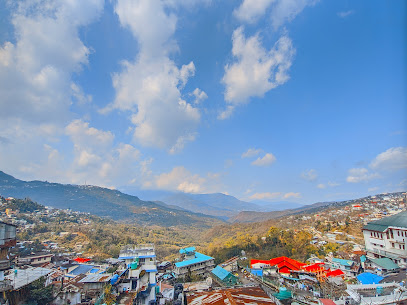
Kisama Heritage Village
Discover the vibrant culture and traditions of the Naga tribes at Kisama Heritage Village, a captivating tourist attraction in Nagaland.
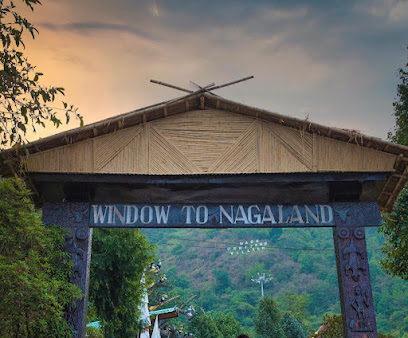
Nagaland State Museum
Discover the vibrant cultural heritage of Nagaland at the Nagaland State Museum, showcasing the unique traditions and history of the Naga tribes.
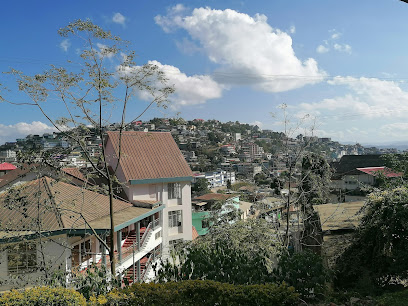
Sakhrie Park
Discover the serene beauty of Sakhrie Park in Kohima, a tranquil retreat perfect for nature lovers and families seeking relaxation and picturesque views.
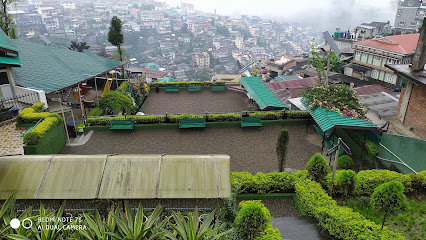
Puliebadze, Jotsoma Village
Explore the mesmerizing Puliebadze in Jotsoma Village, where nature's beauty meets rich cultural heritage in the heart of Nagaland.
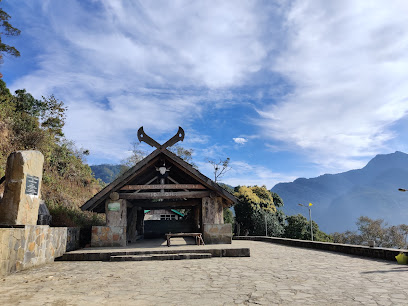
Botanical Garden
Discover the lush beauty of Kohima's Botanical Garden, a serene escape showcasing Nagaland's diverse flora and tranquil landscapes.
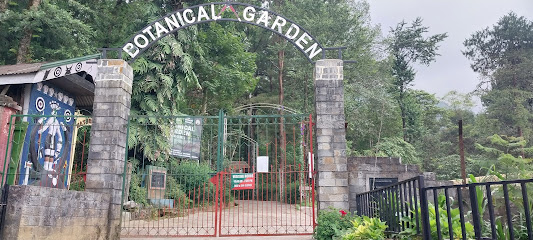
Dzuleke
Explore the breathtaking landscapes of Dzuleke, a serene park in Kohima, Nagaland, featuring vibrant flora and a tranquil lake for nature lovers.
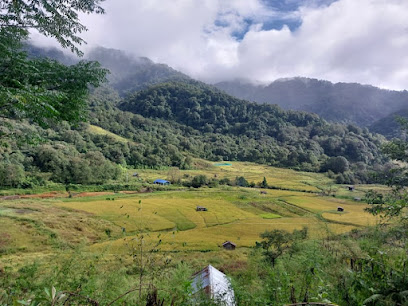
Highland Park
Explore Highland Park in Kohima, a serene haven of lush greenery and stunning landscapes, perfect for relaxation and nature exploration.
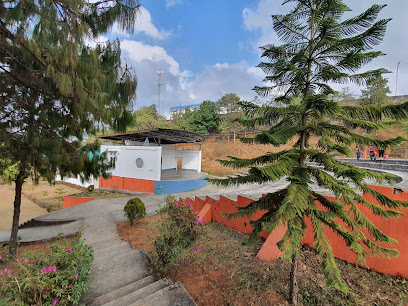
NSF Martyrs' Park
Discover the serene NSF Martyrs' Park in Kohima, a poignant memorial honoring the sacrifices of the Naga Students' Federation amidst lush landscapes.
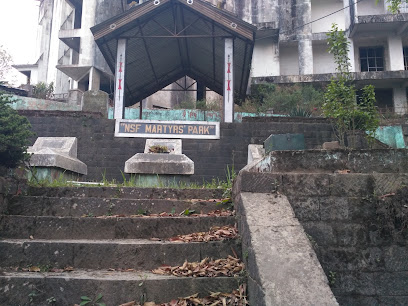
Niathu Garden
Discover the tranquil beauty of Niathu Garden in Kohima, Nagaland, a perfect escape for nature lovers and peace seekers.
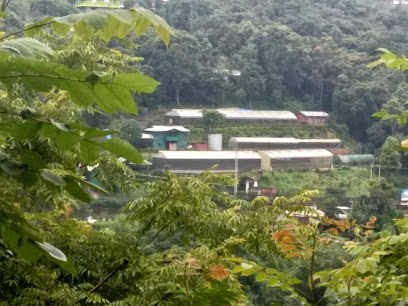
A. Z. Phizo Memorial
Explore the A. Z. Phizo Memorial in Nagaland, a serene tribute to a key figure in Naga history amidst lush landscapes and rich cultural narratives.
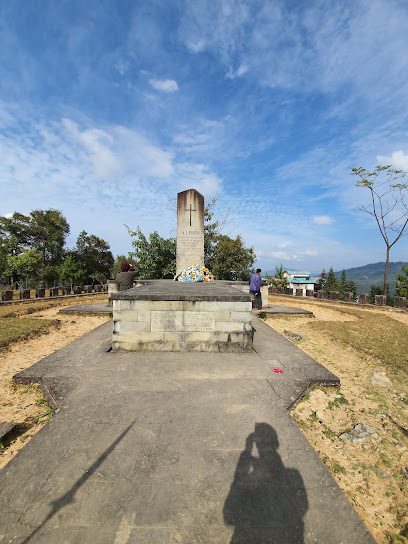
Kuozhü View Point
Discover the breathtaking views of Kohima from Kuozhü View Point, a serene destination perfect for nature lovers and photography enthusiasts.
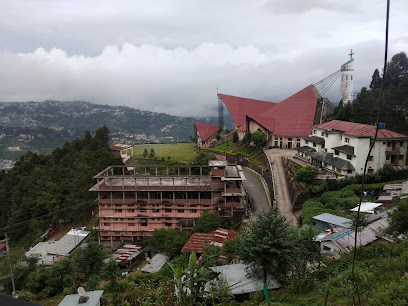
Longyang's Lounge
Experience the beauty and tranquility of Longyang's Lounge, a serene park in Kohima, Nagaland, ideal for relaxation and cultural immersion.
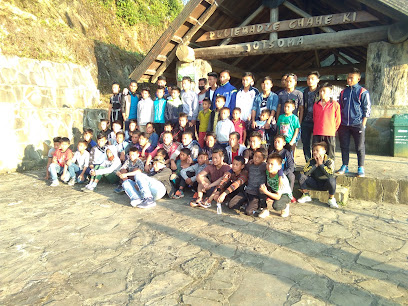
Sokhriezie Park
Explore the natural beauty and serene landscapes of Sokhriezie Park, a perfect retreat for nature lovers in Kohima, Nagaland.
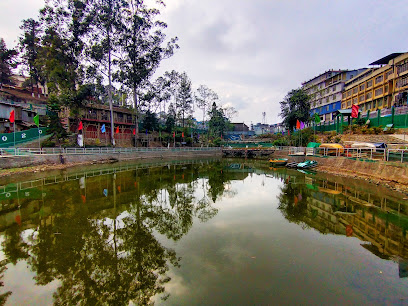
Nagaland Heritage Village
Explore the vibrant culture, traditions, and crafts of Nagaland at the Heritage Village, a living testament to the Naga tribes' rich history.
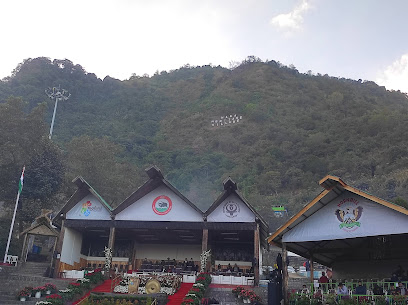
Essential places to dine
Aurora restaurant&lodging
Discover the perfect blend of Indian and Chinese cuisines at Aurora Restaurant & Lodging in Kohima - where comfort meets flavor.
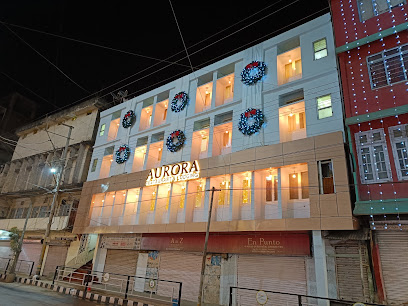
Yaotsu's Pure Veg and Non-Veg Restaurant
Experience the rich flavors of Nagaland at Yaotsu's Pure Veg and Non-Veg Restaurant - where vegetarian meets non-vegetarian delight!
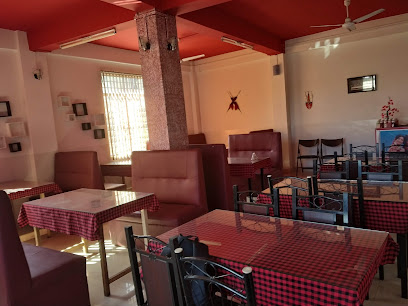
Fifa Restaurant 2.0
Discover delicious local and international cuisine at Fifa Restaurant 2.0 in Kohima—where every meal is paired with breathtaking views.
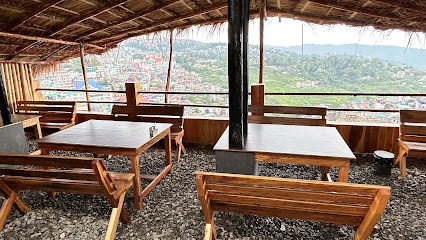
JAT Restaurant
Experience authentic Indian breakfast and delightful meals at JAT Restaurant in Kohima's Jail Colony.
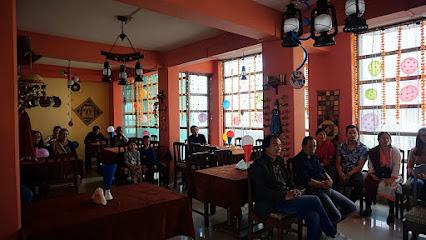
Visa Restaurant And Cafe
Savor the authentic flavors of Nagaland at Visa Restaurant And Cafe in Kohima - a culinary gem offering delightful local dishes.
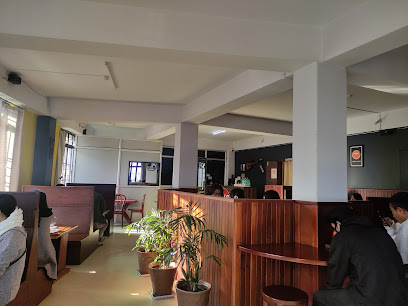
Where's the food? The Naga Diner
Experience authentic Naga cuisine at Where's the Food? The Naga Diner - where every meal tells a story.
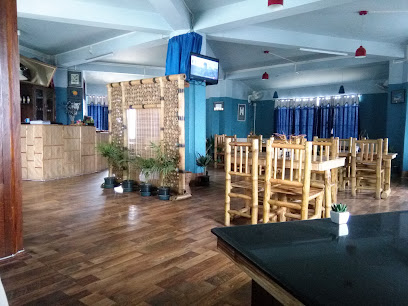
Dosa Dosa
Experience authentic South Indian flavors at Dosa Dosa in Kohima - where every bite takes you on a culinary journey.
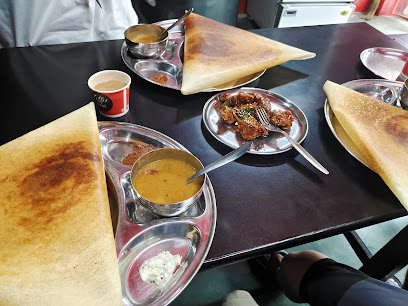
Korean Uncles Cafe
Experience the essence of Korea at Korean Uncles Cafe in Kohima – where tradition meets flavor in every dish.
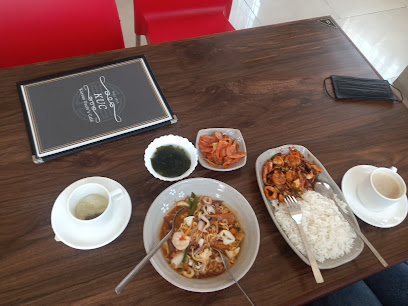
The Secret Garden
Experience the charm of Kohima with exquisite dining at The Secret Garden - where local flavors meet a serene ambiance.
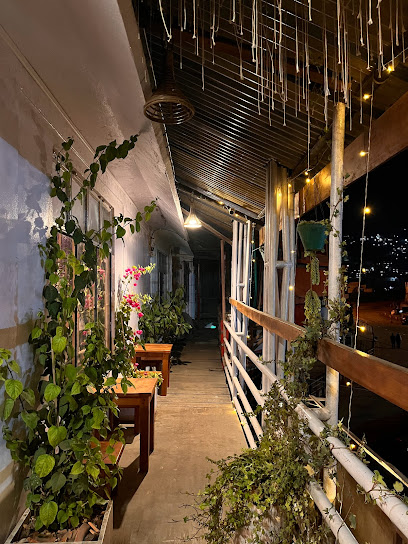
Ooopar
Experience culinary diversity at Ooopar in Kohima – where every meal is a celebration of flavors from around the world.
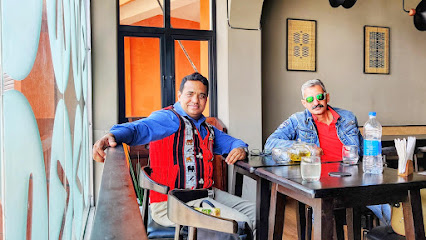
Tashi Delek
Discover Tashi Delek: A Culinary Haven in Kohima Offering Authentic Indian & Tibetan Cuisine Amidst Stunning Local Culture.
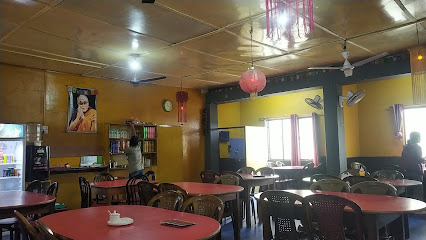
Rendezvous
Experience authentic Asian flavors at Rendezvous in Kohima - where culinary tradition meets warm hospitality.

The Continent
Experience authentic Naga cuisine at The Continent in Kohima - where tradition meets flavor in every dish.
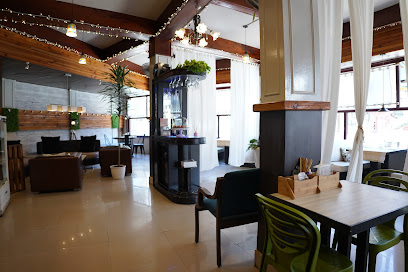
Deccan Kitchen
Experience the authentic flavors of India at Deccan Kitchen in Kohima - where every dish tells a story.
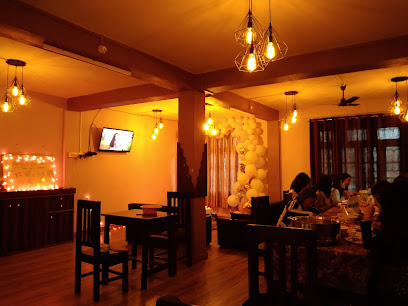
Nouva
Discover Nouva in Kohima - where authentic Naga cuisine meets contemporary dining in a serene setting.
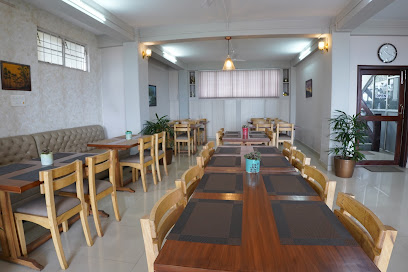
Markets, malls and hidden boutiques
Gravity
Discover the heart of Kohima at Gravity, a vibrant shopping mall offering diverse shops, local cuisine, and a lively atmosphere.

Mato Complex
Discover the Mato Complex in Kohima: A lively shopping destination showcasing local crafts, sports gear, and the vibrant culture of Nagaland.
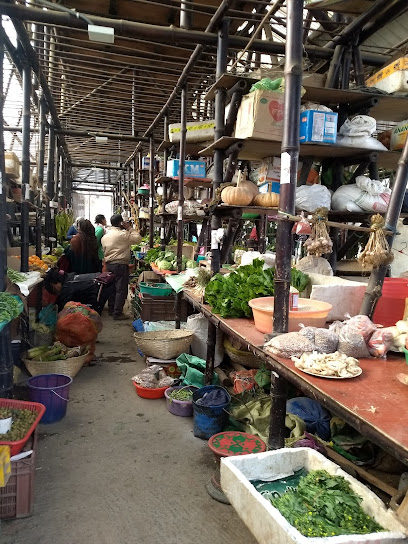
Fancy Market
Discover unique treasures and local flavors at Kohima's Fancy Market, a vibrant hub of shopping and culture in Nagaland.
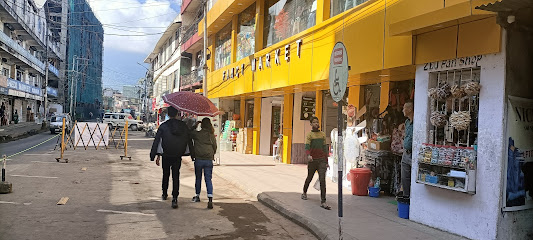
Adidas
Explore the Adidas store in Kohima for the latest in sportswear, combining style and performance for all your athletic needs.

Firstcry.com Store Kohima New Secretariat Road
Discover a delightful range of baby products at Firstcry.com Store, the ultimate shopping destination for families in Kohima.
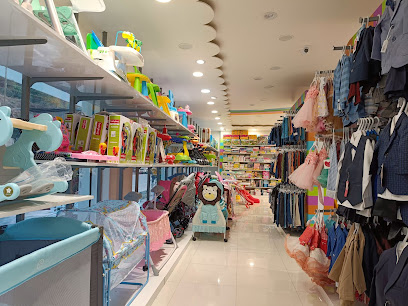
SK SONS
Discover SK SONS in Kohima: Your ultimate destination for cosmetics and beauty essentials in Nagaland.
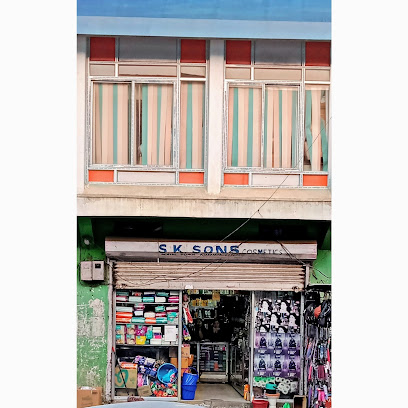
A One Stationery
Discover the ultimate stationery haven at A One Stationery in Kohima, offering a wide range of unique and quality products for every need.
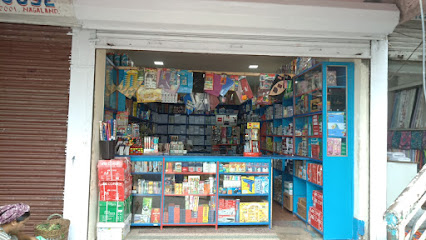
Keepsakes
Explore the rich cultural heritage of Nagaland at Keepsakes, Kohima's premier gift shop for authentic handicrafts and souvenirs.
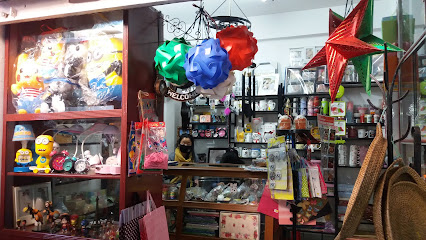
The Ong Avenue
Explore Kohima's vibrant fashion scene at The Ong Avenue, where tradition meets modern style in a unique clothing store experience.
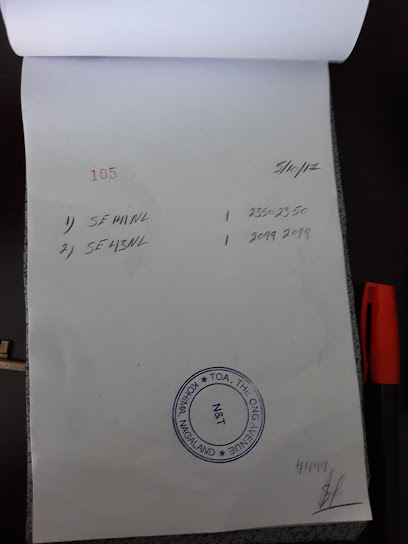
H.M Cotton Shop
Explore the vibrant textiles and home goods at H.M Cotton Shop in Kohima, a true reflection of Nagaland's rich cultural heritage.
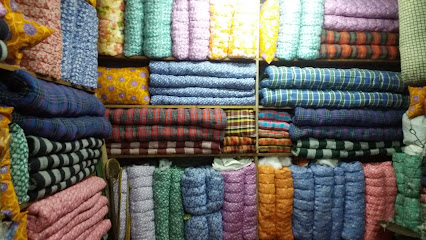
Main town
Discover Kohima's Main Town Electronics Store - a vibrant hub for the latest technology and local culture in Nagaland.
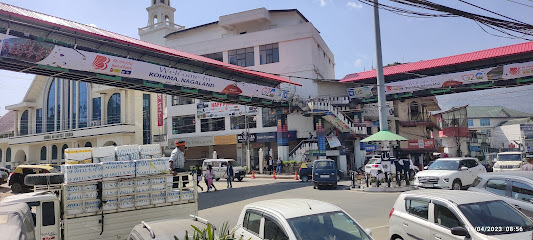
Tookee
Explore Tookee, a charming general store in Kohima, offering local treasures and everyday essentials for every traveler.
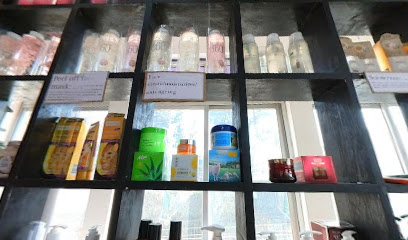
Unique Collection Corner
Explore authentic local crafts and unique souvenirs at Unique Collection Corner in Kohima's vibrant Naga Bazaar.
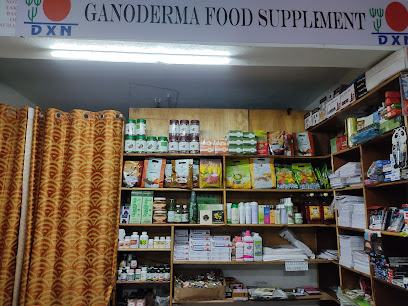
RB Grocery Shop
Explore the essence of Nagaland at RB Grocery Shop, where local flavors and culture come together to create an unforgettable shopping experience.

Leather Boutique Kohima
Discover unique leather craftsmanship at Leather Boutique Kohima, where local artistry meets style in the heart of Nagaland.

Essential bars & hidden hideouts
Ooopar
Discover Ooopar in Kohima: A fusion of global flavors, signature cocktails, and exquisite desserts await you.
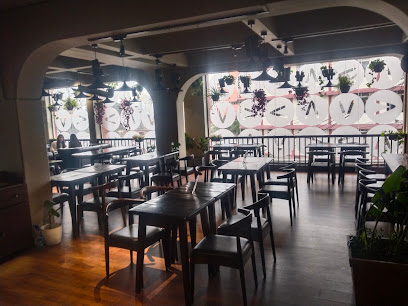
Vivid Lounge
Experience the best of local cuisine and cozy lodging at Vivid Lounge, nestled in the scenic hills of Kohima, Nagaland.
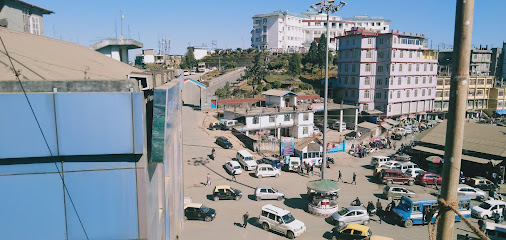
8N8 Cafe
Discover the cozy charm of 8N8 Cafe in Kohima, where local flavors meet a welcoming atmosphere for travelers.

Oakland Boutique
Discover the perfect blend of comfort and local culture at Oakland Boutique, a charming bed and breakfast in Kohima, Nagaland.

Unyieman Bar
Experience the vibrant nightlife at Unyieman Bar in Kohima, where local culture meets a lively atmosphere and unique drink selections.
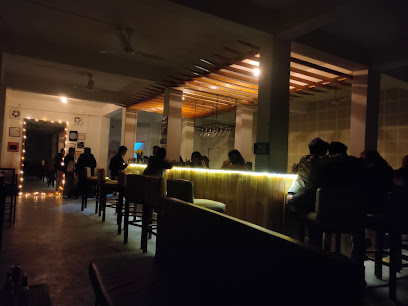
8N8 Restaurant &Members Lounge
Experience the rich flavors of Nagaland at 8N8 Restaurant & Members Lounge, a culinary haven in Kohima with a diverse menu and inviting ambiance.
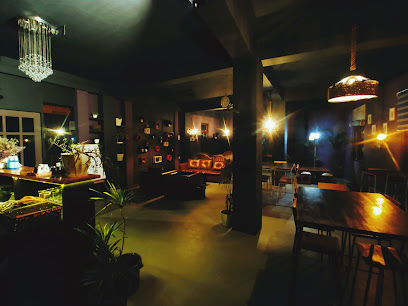
The Juice Bar
Experience the vibrant flavors of Kohima at The Juice Bar, your go-to fast food spot for refreshing drinks and snacks in Nagaland.
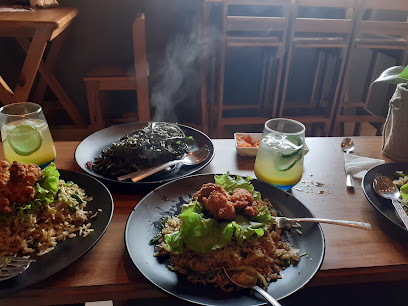
CHELSEA
Discover the lively atmosphere of Chelsea, a top bar in Kohima offering local brews and a vibrant social scene for an affordable night out.

Shohe Mudu Ghor
Discover the charm of Shohe Mudu Ghor in Kohima, a vibrant bar that blends local culture and a welcoming atmosphere for an unforgettable experience.

Neitho Usou Lpg
Explore the vibrant Neitho Usou Bar in Kohima - a perfect blend of local culture, great drinks, and lively nightlife.

Just cafe
Discover a blend of local charm and delightful refreshments at Just Cafe in Kohima, a perfect retreat for every traveler.

Bunuo's Night School
Discover the vibrant nightlife at Bunuo's Night School, a lively bar in Kohima offering a mix of local drinks and a welcoming atmosphere.

SAINIK INSTITUTE BAR IGAR NORTH
Discover the charm of Sainik Institute Bar in Kohima, a perfect blend of local culture and relaxation amidst the scenic beauty of Nagaland.

DOSE TAMUL SHOP
Discover the vibrant nightlife of Kohima at DOSE TAMUL SHOP, a bar that blends local flavors with a lively atmosphere in the heart of Nagaland.

Badass joint
Experience the vibrant nightlife of Kohima at Badass Joint, a lively bar with great drinks and an inviting atmosphere.

Local Phrases
-
- HelloMhase
[m-ha-se] - GoodbyeKenei
[ke-nei] - YesHo
[ho] - NoTsü
[tsü] - Please/You're welcomeKhüme
[khü-me] - Thank youNagalandagi
[na-ga-lan-da-gi] - Excuse me/SorryKhibi
[khi-bi] - How are you?Kenei thü
[ke-nei thü] - Fine. And you?Theisii. Thü kenei?
[thei-si. thü ke-nei?] - Do you speak English?English kümüsu?
[english kü-mü-su?] - I don't understandTheisii nüthü
[thei-si nu-thü]
- HelloMhase
-
- I'd like to see the menu, pleaseMenu sünü thü
[me-nu sü-nü thü] - I don't eat meatKüma sii nüthü
[kü-ma sii nu-thü] - Cheers!Tülü
[tü-lü] - I would like to pay, pleaseThü nüthü thü
[thü nu-thü thü]
- I'd like to see the menu, pleaseMenu sünü thü
-
- Help!Süng
[süng] - Go away!Jano
[ja-no] - Call the Police!Police sünü thü
[po-lice sü-nü thü] - Call a doctor!Doctor sünü thü
[doc-tor sü-nü thü] - I'm lostYamahü
[ya-ma-hü] - I'm illNüthü
[nu-thü]
- Help!Süng
-
- I'd like to buy...Alü thü
[a-lü thü] - I'm just lookingYamahü
[ya-ma-hü] - How much is it?Thé thü
[thé thü] - That's too expensiveThépisii kha
[thé-pi-si kha] - Can you lower the price?Kha sünü thü
[kha sü-nü thü]
- I'd like to buy...Alü thü
-
- What time is it?Thé thü?
[thé thü?] - It's one o'clockTheü khüni
[theü khü-ni] - Half past (10)Théphüni (10)
[thé-phü-ni (10)] - MorningKhüni
[khü-ni] - AfternoonKhenei
[khe-nei] - EveningTheü
[theü] - YesterdayYahü
[ya-hü] - TodayThüni
[thü-ni] - TomorrowThüni tsü
[thü-ni tsü] - 1Kha
[kha] - 2Keni
[ke-ni] - 3Thuni
[thu-ni] - 4Kuni
[ku-ni] - 5Tsüni
[tsü-ni] - 6Khuni
[khu-ni] - 7Tuni
[tu-ni] - 8Nuni
[nu-ni] - 9Süni
[sü-ni] - 10Kümi
[kü-mi]
- What time is it?Thé thü?
-
- Where's a/the...?Ama...
[a-ma...] - What's the address?Dress...
[dress...] - Can you show me (on the map)?Map sünü thü
[map sü-nü thü] - When's the next (bus)?Bus sünü thü
[bus sü-nü thü] - A ticket (to ....)Ticket (....) thü
[ticket (....) thü]
- Where's a/the...?Ama...
History of Kohima
-
Kohima, the capital of Nagaland, is an ancient city with a rich cultural heritage. The area has been inhabited by the Naga tribes for centuries. The Angami tribe, in particular, has a significant presence here. The Naga people have a rich oral tradition, and their folklore is filled with tales of bravery, community, and the natural beauty of the region.
-
In the 19th century, Kohima came under British administration as part of the Naga Hills district. The British established Kohima as a district headquarters in 1879. The colonization led to the introduction of Christianity and Western education, which brought significant changes to local society. However, this period also saw resistance from the Naga tribes, who fought to preserve their autonomy and culture.
-
One of the most significant historical events in Kohima is the Battle of Kohima, fought from April to June 1944 during World War II. This battle was part of the larger Burma Campaign and marked the turning point in the Allied forces' efforts to repel Japanese advances into India. The battle is often referred to as the 'Stalingrad of the East' due to its intensity and strategic importance. The Kohima War Cemetery, a poignant reminder of this battle, is a place of solemn remembrance.
-
After India gained independence in 1947, Kohima continued to play a significant role in the region. Nagaland was officially declared a state of India on December 1, 1963, with Kohima as its capital. This period saw efforts to develop infrastructure, education, and healthcare in the region. Despite these advancements, the region also experienced insurgency and demands for greater autonomy from the Indian government, leading to periods of unrest.
-
Kohima is a vibrant cultural hub, known for its rich traditions and festivals. The Hornbill Festival, held every December, is one of the most famous events in the region. It showcases the culture, music, dance, and crafts of the Naga tribes and attracts visitors from all over the world. The festival is named after the Indian Hornbill, a bird that is revered in Naga folklore. Traditional Naga cuisine, handloom products, and indigenous games are some of the highlights of this festival.
-
Today, Kohima is a blend of traditional and modern influences. The city has grown while maintaining its cultural roots. Modern amenities, educational institutions, and healthcare facilities have developed alongside traditional Naga homes and markets. The cityscape includes landmarks like the Kohima Cathedral, which is one of the largest and most beautiful churches in Asia, and the State Museum, which offers insights into the diverse cultures of Nagaland.
Kohima Essentials
-
Kohima, the capital of Nagaland, is accessible by road, rail, and air. The nearest airport is Dimapur Airport, approximately 70 kilometers away. From Dimapur, you can take a taxi or a government-run bus to Kohima, which typically takes around 2-3 hours. The nearest railway station is also in Dimapur. Regular train services connect Dimapur with major cities like Guwahati and Kolkata. National Highway 29 connects Kohima with other cities in the region, making it accessible by road.
-
Within Kohima, taxis are the most common mode of transportation. Shared taxis are an economical option for traveling within the city. Auto-rickshaws are also available for shorter distances. For a more flexible option, you can rent a car, but be prepared for hilly terrain and narrow roads. The city is relatively compact, so walking is a viable option for exploring local attractions. Public buses are available but are less frequent.
-
The official currency in Kohima is the Indian Rupee (INR). Credit and debit cards are accepted in most hotels, restaurants, and larger shops, but it's advisable to carry cash for smaller establishments and local markets. ATMs are available in the city, but it's wise to withdraw sufficient cash before heading to rural or remote areas.
-
Kohima is generally safe for tourists, but like any destination, it's important to take standard precautions. Avoid walking alone at night, especially in poorly lit areas. Be cautious of your belongings in crowded places like markets and bus stations. While violent crime is rare, petty theft can occur. Areas like the Kohima War Cemetery and Kisama Heritage Village are safe and well-patrolled.
-
In case of emergency, dial 100 for police assistance and 102 for medical emergencies. Kohima has several hospitals and clinics that can provide medical care. The Naga Hospital Authority Kohima is a key medical facility in the city. Pharmacies are available for over-the-counter medications. It's advisable to have travel insurance that covers medical emergencies.
-
Fashion: Do dress modestly, especially when visiting religious sites. Avoid wearing revealing clothing. Religion: Do respect local customs and traditions. Remove your shoes before entering a place of worship. Public Transport: Do be respectful and give up your seat to elderly passengers. Don't eat or drink on public transport. Greetings: Do greet people with a slight nod or handshake. Use 'sir' or 'madam' as a sign of respect. Eating & Drinking: Do try local dishes like smoked pork and bamboo shoot curry. Don't waste food, as it is considered disrespectful.
-
To experience Kohima like a local, visit the local markets such as the Naga Bazaar and the Night Bazaar for fresh produce and traditional Naga crafts. Engage with locals, who are often friendly and willing to share stories about the region's culture and history. Don't miss the Hornbill Festival in December, which showcases the rich cultural heritage of Nagaland. For a unique experience, trek to Dzukou Valley, known for its stunning landscapes and seasonal flowers.
Nearby Cities to Kohima
-
Things To Do in Imphal
-
Things To Do in Itanagar
-
Things To Do in Shillong
-
Things To Do in Sylhet
-
Things To Do in Guwahati
-
Things To Do in Aizawl
-
Things To Do in Trashigang
-
Things To Do in Mongar
-
Things To Do in Agartala
-
Things To Do in Comilla
-
Things To Do in Jakar
-
Things To Do in Bumthang
-
Things To Do in Trongsa
-
Things To Do in Dhaka
-
Things To Do in Chittagong










